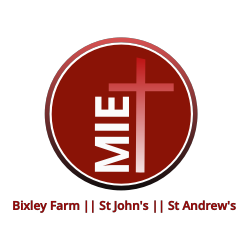Isn’t it interesting how we can get bored of bits of the Bible? I wonder how many of us rolled our eyes (at least internally) when we saw the reading was the ‘feeding of the 5,000’ – again. It the only miracle recorded in all four Gospels, and it is a standard ‘go-to’ passage for All Age Services, Sunday Groups and School Assemblies / Collective Worship. It is a passage that has been ridiculed and trivialized by scholars (and the preachers who read them and should really know better!). The nonsense that has been preached on this miracle beggars belief: from the idea that the ‘miracle’ is in people learning to share previously hidden packed lunches (probably the most popular and the most inane), to the even more implausible idea that Jesus had a secret stash of bread and fish hidden in a nearby cave!
If you’ve been tracking with us in evening services, you’ll be tired of hearing me complain about how much damage we do to passages when we take them and turn them into children’s stories. We lose so much, it’s hardly surprising that they become ‘boring’ to us. When we put the Gospel accounts next to each other something far more disturbing and troubling emerges. John’s account of Jesus’ teaching associated with this miracle and the chilling conclusion that ‘From this time many of his disciples turned back and no longer followed him’, should be enough to give us pause for thought!
It’s an incredibly profound and dynamic miracle in which Jesus is achieving multiple ends with a single means. Luke focuses our attention not on Jesus’ challenge to the religious leaders, nor on the reaction of the crowds, or even the disciples. He focusses tightly on Jesus’ ongoing training of the apostles for their mission. It is clear that they have much to learn before they can be entrusted with proclaiming the Gospel of the Kingdom throughout the nations of the world! And the fact that this miracle features in all the Gospels should alert us to how central it is in preparing the Church for their global mission.
Put in this context, it is possible that there is more here to learn than we anticipated… which shouldn’t surprise us really.
Questions:
What would have previously said was the main point of this passage?
What is the key mistake the disciple make and that Luke sets out in 9:10? How will the ‘feeding of the 5,000’ directly speak into this fundamental error?
In our own experience of mission, how do we make the same mistake? What do we need to learn from this passage about our own outreach at MIE? How should that outreach change in the light of Luke 9:10-17?
Why is Jesus willing to give up his time with His disciples in order to welcome the crowd? How did the disciples feel about that shift in priorities? What do we learn from this?
Based on what we’ve already heard from Jesus in Luke’s Gospel, what do you think was He was teaching them about the Kingdom of God?
What do you make of alternative explanations of this passage that try to suggest there is no actual miracle being performed here? What do you think drives people to ignore what the passage says and to come up with their own ideas?
Many Bible students suspect that Luke is comparing Jesus’ miracle to Moses (Ex.16) and / or Elijah (II Kings 4:42-44). Why would Luke do this? How would the comparison work, and what would it teach us about Jesus? What then would be the significance of Moses and Elijah appearing later in Chapter 9 during the Transfiguration (9:30)?
Why does Luke make the point that there were twelve basketfuls left over (9:17)? Why does Jesus make this amount too much?

